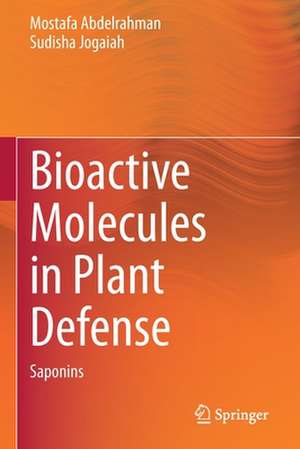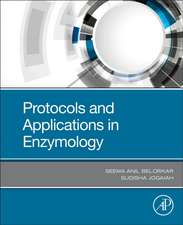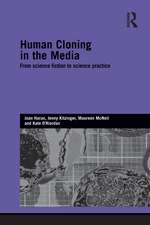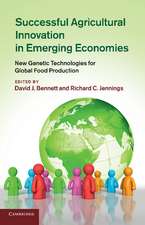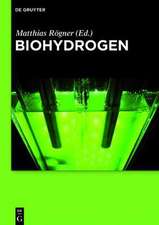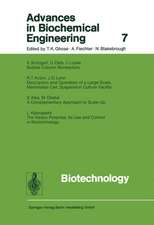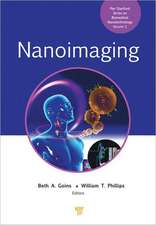Bioactive Molecules in Plant Defense: Saponins
Autor Mostafa Abdelrahman, Sudisha Jogaiahen Limba Engleză Paperback – 30 noi 2021
In this book, the authors briefly introduce readers to saponin accumulation in various plant organs, with a specific focus on their structure classification and diversity. Readers will find detailed information on the saponin structure-activity relationship and saponins’ vital role in sustainable agriculture as a chemical barrier to pathogen attack. The latest techniques for isolating, identifying, and quantifying saponins are also discussed. In the closing chapter, the authors outline the recent metabolic engineering strategies applied to improve saponin glycosides production and their potential applications in plant disease resistance.
This book and the companion volume Bioactive Molecules in Plant Defense: Signaling in Growth and Stress offer vital resources for all researchers and students interested in plant pathology, mycology and sustainable agriculture.
| Toate formatele și edițiile | Preț | Express |
|---|---|---|
| Paperback (2) | 639.25 lei 6-8 săpt. | |
| Springer International Publishing – oct 2020 | 639.25 lei 6-8 săpt. | |
| Springer International Publishing – 30 noi 2021 | 719.47 lei 38-44 zile | |
| Hardback (2) | 645.47 lei 6-8 săpt. | |
| Springer International Publishing – oct 2019 | 645.47 lei 6-8 săpt. | |
| Springer International Publishing – 29 noi 2020 | 887.24 lei 6-8 săpt. |
Preț: 719.47 lei
Preț vechi: 946.67 lei
-24% Nou
Puncte Express: 1079
Preț estimativ în valută:
137.66€ • 143.75$ • 113.68£
137.66€ • 143.75$ • 113.68£
Carte tipărită la comandă
Livrare economică 11-17 aprilie
Preluare comenzi: 021 569.72.76
Specificații
ISBN-13: 9783030611514
ISBN-10: 3030611515
Pagini: 101
Ilustrații: VIII, 101 p. 15 illus., 14 illus. in color.
Dimensiuni: 155 x 235 mm
Greutate: 0.17 kg
Ediția:1st ed. 2020
Editura: Springer International Publishing
Colecția Springer
Locul publicării:Cham, Switzerland
ISBN-10: 3030611515
Pagini: 101
Ilustrații: VIII, 101 p. 15 illus., 14 illus. in color.
Dimensiuni: 155 x 235 mm
Greutate: 0.17 kg
Ediția:1st ed. 2020
Editura: Springer International Publishing
Colecția Springer
Locul publicării:Cham, Switzerland
Cuprins
Introduction.- Production of Plant Bioactive Triterpenoid and Steroidal Saponins.- Metabolic and Functional Diversity of Saponins.- Saponins versus Plant Fungal Pathogens.- Saponin-Detoxifying Enzymes.- Isolation and Characterization of Triterpenoid and Steroidal Saponins.- Method of Estimation in Biological Sample.- Genetic Engineering of Saponin Target Genes to Improve Yields.
Notă biografică
Dr. Mostafa Abdelrahman obtained his Ph.D. Degree from the United Graduate School of Agricultural Sciences, Tottori University, Japan, in 2015. His research focuses on understanding the transcriptomic and metabolomic variability of various cropping system in response to biotic stress, in particular, the Fusarium pathogen. From November 2015 to March 2018, he was a postdoctoral researcher at the Graduate School of Life Science, Tohoku University, Japan, where he used the RNA-Seq-based transcriptome to identify the genetics and molecular mechanisms of Phomopsis asparagi resistance in wild and cultivated asparagus plants. Since April 2018, Mostafa has been a JSPS Fellow at the Molecular Breeding Lab, Arid Land Research Center at Tottori University, where he is working on metabolomic and transcriptomic analyses to isolate the functional gene(s) associated with heat stress tolerance in wheat in order to understand cell responses under stress conditionsand ultimately develop new crop varieties. He has published more than 31 research and review articles in peer-reviewed journals, and he is the editor the Springer book The Allium Genomes published in the Compendium of Plant Genomes, 2018.
Dr. Sudisha Jogaiah is an Assistant Professor at the Department of Studies in Biotechnology and Microbiolgy and is currently the coordinator of Karnatak University’s “Plant Healthcare and Diagnostic Centre for Northern Karnataka,” supported by the Vision Group of Science and Technology (VGST), Government of Karnataka, India. He has published more than 60 research papers in national and international journals, and 7 book chapters on various aspects of the molecular communication between host and pathogen, and the development of novel strategies for ecology-based or sustainable agriculture. He has received research grants from a number of national and state funding agencies, such as UGC, DST, JSPS and VGST to work on plant–microbe interactions and disease management. He has also received 14 Indian National Awards, including Young Scientist Award for Agriculture Microbiology from the Association of Microbiologist of India and two international awards, such a postdoctoral researcher award from the Japan Society for the Promotion of Science, and the Japan International Award for Young Agricultural Researchers in 2012 from the Japanese Government. In 2016 and 2017 he received the Karnatak University best research paper award. He is a member of the editorial board of various journals, including Scientific Reports (Nature Publication), BMC Plant Biology (Biomed Central Publications) PLOS ONE (Plos Group), Frontiers in Plant Science (Frontiers Publication) and Annals of Crop Sciences and Agriculture (Austin Publishing group) and many more.
Dr. Sudisha Jogaiah is an Assistant Professor at the Department of Studies in Biotechnology and Microbiolgy and is currently the coordinator of Karnatak University’s “Plant Healthcare and Diagnostic Centre for Northern Karnataka,” supported by the Vision Group of Science and Technology (VGST), Government of Karnataka, India. He has published more than 60 research papers in national and international journals, and 7 book chapters on various aspects of the molecular communication between host and pathogen, and the development of novel strategies for ecology-based or sustainable agriculture. He has received research grants from a number of national and state funding agencies, such as UGC, DST, JSPS and VGST to work on plant–microbe interactions and disease management. He has also received 14 Indian National Awards, including Young Scientist Award for Agriculture Microbiology from the Association of Microbiologist of India and two international awards, such a postdoctoral researcher award from the Japan Society for the Promotion of Science, and the Japan International Award for Young Agricultural Researchers in 2012 from the Japanese Government. In 2016 and 2017 he received the Karnatak University best research paper award. He is a member of the editorial board of various journals, including Scientific Reports (Nature Publication), BMC Plant Biology (Biomed Central Publications) PLOS ONE (Plos Group), Frontiers in Plant Science (Frontiers Publication) and Annals of Crop Sciences and Agriculture (Austin Publishing group) and many more.
Textul de pe ultima copertă
This book presents a broad perspective on saponins as important natural products with a key role in plant defense. The presence of saponins has been reported in several plant species, and many types of saponins have been found to exhibit significant antifungal activities. In addition to their role in plant defense, saponins are of increasing interest for drug research, as they are active ingredients in several traditional medicines and hold potentially valuable pharmacological properties.
In this book, the authors briefly introduce readers to saponin accumulation in various plant organs, with a specific focus on their structure classification and diversity. Readers will find detailed information on the saponin structure-activity relationship and saponins’ vital role in sustainable agriculture as a chemical barrier to pathogen attack. The latest techniques for isolating, identifying, and quantifying saponins are also discussed. In the closing chapter, the authors outline the recent metabolic engineering strategies applied to improve saponin glycosides production and their potential applications in plant disease resistance.
This book and the companion volume Bioactive Molecules in Plant Defense: Signaling in Growth and Stress offer vital resources for all researchers and students interested in plant pathology, mycology and sustainable agriculture.
In this book, the authors briefly introduce readers to saponin accumulation in various plant organs, with a specific focus on their structure classification and diversity. Readers will find detailed information on the saponin structure-activity relationship and saponins’ vital role in sustainable agriculture as a chemical barrier to pathogen attack. The latest techniques for isolating, identifying, and quantifying saponins are also discussed. In the closing chapter, the authors outline the recent metabolic engineering strategies applied to improve saponin glycosides production and their potential applications in plant disease resistance.
This book and the companion volume Bioactive Molecules in Plant Defense: Signaling in Growth and Stress offer vital resources for all researchers and students interested in plant pathology, mycology and sustainable agriculture.
Caracteristici
Outlines the role of saponins as chemical barriers to pathogen attack for sustainable agriculture Discusses the structure-activity relationship with regard to saponins Explore the latest techniques for saponin isolation, identification, and quantification
